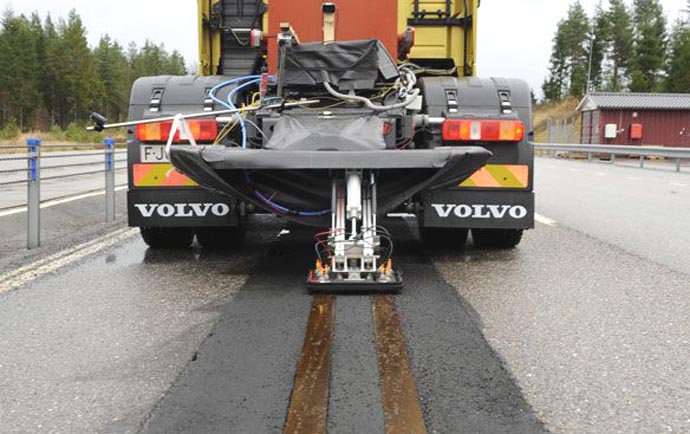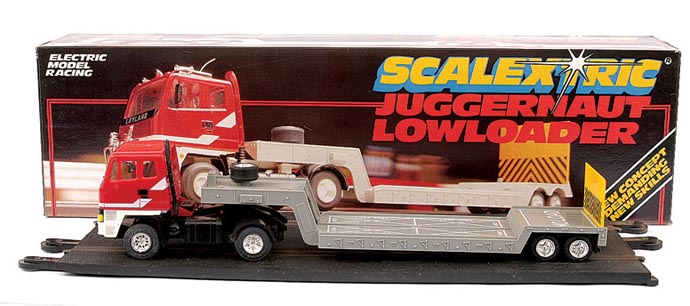One of the reasons the uptake of electric cars continues to be so slow is that batteries are expensive and take a long time to recharge, but electrified roads could offer a solution.
Volvo is well known for ground-breaking innovation. It was the first car maker to introduce modern seat belts and more recently it has developed vehicles that can detect pedestrians and cyclists and slow themselves down automatically if necessary. But it’s most recent project is perhaps it’s most ambitious; a life-size Scalextric track to power electric lorries.

Volvo believes that power lines built into the surface of the road could be a future solution for long-distance trucks and buses running on electricity, and would do away with the need for heavy, expensive and environmentally-damaging batteries.
Like a large-scale version of the popular kids’ slot racing game, Volvo’s approach involves two power lines built into the surface of the entire length of the road. A current collector in contact with the power lines will be located on the truck.

“With this method, electric vehicles could be continuously supplied with power without carrying large batteries,” says Mats Alaküla. “The power line will be built in sections and one section is only live as the truck passes.”
Last year, Volvo built a 400-meter long track at its testing facility in Hällered outside Gothenburg. The company has been testing the system since last autumn.
David Futter
Most of the serious attempts at this are looking at inductive energy transfer rather than using contacts, but I guess that is a bit low power for buses and lorries. However if you need to use contacts why not put overhead wires down motorways, suspended from the lamp-posts. Next stage is using metal reinforcing of those grooves that the lorries wear down the inside lane (shall we call them “rails”). Then put a single big engine at the front and tow all the trailers /buses along – we could call that a locomotive. Sounds like the best way to get lots of freight or passengers from one location to another…
Ian Byrne
David’s right – there’s no real reason why this should work better than a conventional railway, as without some sort of guidance system (and rails are the obvious ones) the truck would soon veer off the electrical contacts and come to a grinding halt. And is overtaking possible? With two live contacts so close to each other in the road, it does look quite lethal to me! And it it requires segregated track, well, it really is back to the railway again…
Alternatively trolleybuses at least had the right idea by putting wires relatively safely out of harm’s reach.
Induction systems may indeed prove a better bet, especially for buses which may use the system to recharge batteries at the terminus before running the route. Milton Keynes is about to start a 5 year trial of such a system, and it’s expected that a Timetabled 10 minutes at each end (with an optional boost in the city centre) will enable a normal schedule to be run, and with much lower infrastructure costs. Of course, I’m not really sure why they don’t just have a fast plug-in charging point at each end, but wireless is more cool!
John the builder
I thought of this first